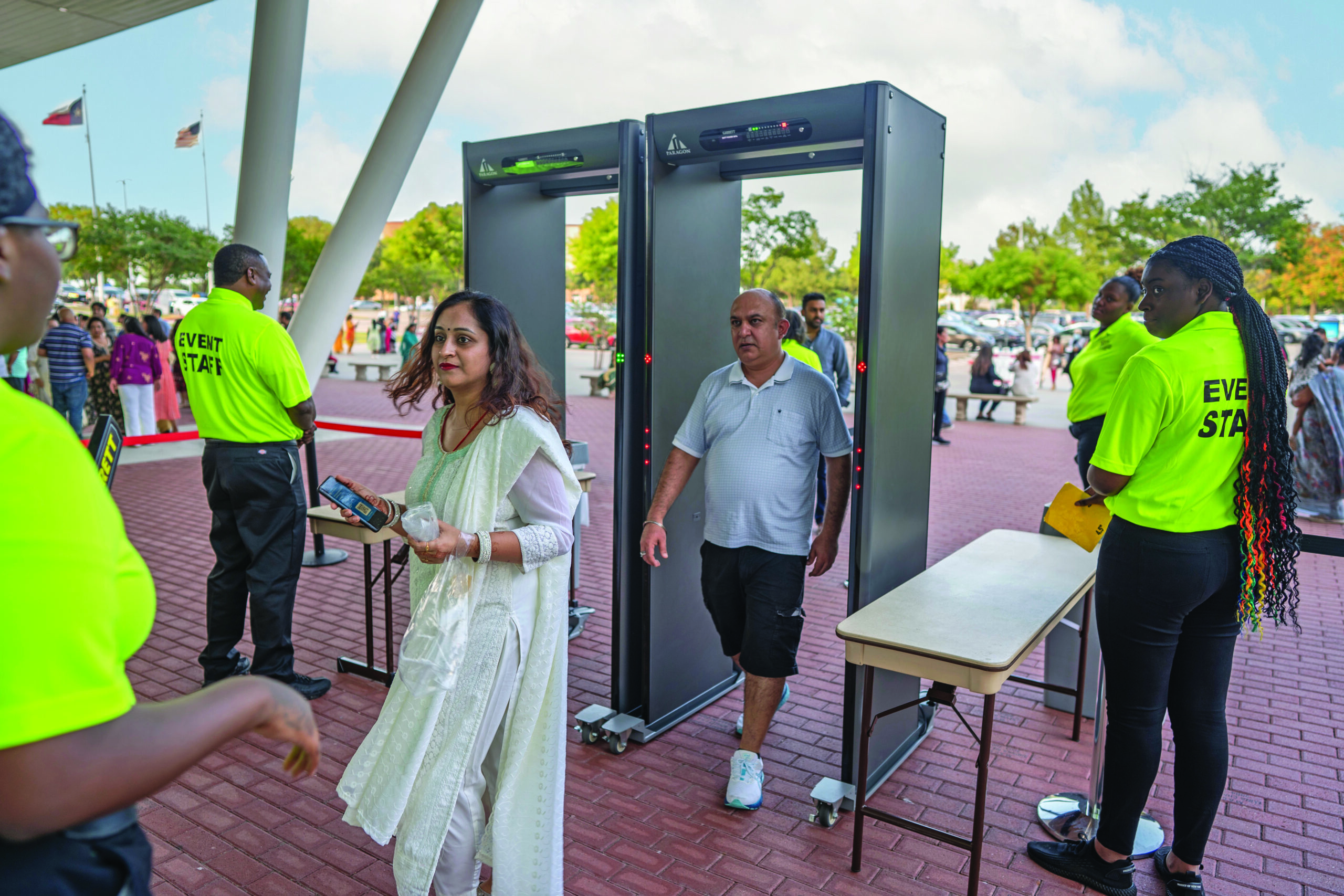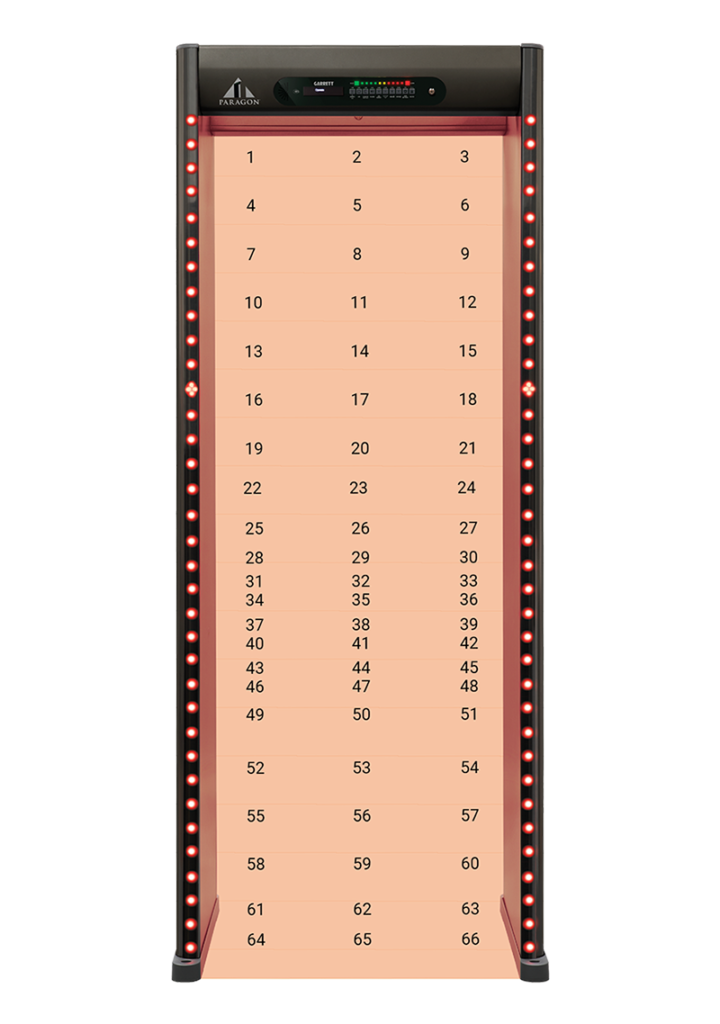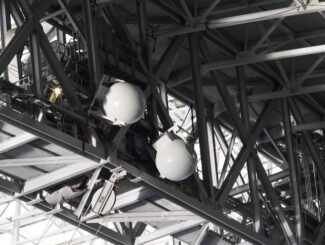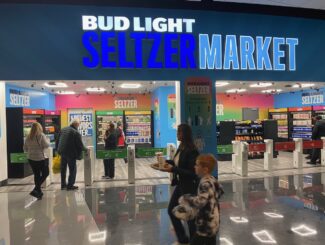
Company: Garrett
Product: Paragon and PD 6500i metal detectors
What it looks like: Traditional box-like detector with two sides and a connecting panel on top.
How it works: People walk through one at a time, stopping if there is an alert. LED lights up and down the back side panels show staff approximately where a weapon might be. In older models, people need to take metallic items out of pockets and bags need to be scanned or inspected separately outside the detector. With updated software, the detectors can be set to ignore phones and keys as possible threats, allowing people to walk through at a faster pace.
Expertise: Garrett was probably the first company to produce walk-through metal detectors for sporting events, first for the 1984 Olympics in Los Angeles. Since then the company has deployed numerous systems at all kinds of sports venues worldwide. Garrett equipment is also used in airports and many other security-sensitive locations.
Profile: Perhaps the company with the longest experience in the stadium security scanning marketplace, privately held Garrett of Garland, Texas, has been left somewhat on the sidelines in the past couple years, watching stadium customers purchase the new walk-through systems from other providers.
According to Garrett CEO Steve Novakovich, the rapid adoption by venues of the newer, faster-flow systems seem to be choices made based more on line-shortening needs instead of the actual security features of the products.

In an interview, Novakovich said that to Garrett — which prides itself on the security capabilities of its offerings — it seems like the purchasing decisions for stadiums on scanning systems “has been taken out of the hands of the security professionals” and instead is being made by C-level executives or ownership.
“In head to head testing, we look to gain the trust of the security professionals,” Novakovich said. “But it seems like [buying decisions] are leaning more toward fan experience and away from security.”
Garrett, which is celebrating its 60th year as a company in 2024, has a rich and interesting history. From roots of its founders developing metal-detection devices for treasure hunters, the company became a powerhouse in the walk-through metal detector space, and with adjacent products like the well-known “Super Scanner V” handheld wand scanner, still easily recognizable in many venues by the large yellow-on-black Garrett logo.

From its first systems for sports — which Novakovich said were developed to answer a request by the FBI for the 1984 Olympics — Garrett systems were deployed at “dozens, if not scores” of stadiums worldwide. But after a big spike in sales in 2017 and 2018, Novakovich said the onset of Covid reduced its sales numbers. And in the most recent few years, Garrett has watched while stadiums chose the new walk-through type devices, a design Garrett does not yet produce. Garrett, which did not provide a detailed count of its large-venue customers, did name the Dallas Cowboys, the Indianapolis Colts and the Tampa Bay Buccaneers as current customers.
While Novakovich understands the desire for stadiums to reduce security lines, especially in a post-Covid environment, he remains a bit puzzled as to why stadiums would so readily trade off security for speed, and pay a premium to do so. According to our research, the price for a single Garrett system is usually $10,000 or less.
Though Novakovich said that multiple operational options exist to improve fan flow outside of using walk-through systems — like having more gates or trying to convince fans to arrive earlier so that entry crowds are more spaced out — Garrett also realized that it needed to answer the trend as best it could. Last year, Garrett added a new software upgrade option for its older PD 6500i metal detectors (the same software is standard on newer Paragon systems) that would allow people to walk through the devices without having to divest phones or keys, which could theoretically speed up flow for the traditional systems.
Though its new Paragon metal detector retains the traditional one-person configuration, its long list of security features — like having 66 specific body zones of scanning, all of which have a corresponding alert light on the back of the system — makes it a good choice for stadiums who want a higer level of security, Novakovich said.
“What will you do if you have an event that needs a higher level of security, say a visit from a head of state?,” Novakovich asked. “Can your equipment adjust? Ours can.”
Eventually, Garrett hopes that more traditional purchasing parameters for security scanning equipment will make a return, a shift that would favor Garrett’s historical expertise.
“We’ll see how the trends play out, but we think the pendulum may swing back to us,” said Novakovich, who seemed to hint that a walk-through system might be under development at Garrett as well. “We’re not letting go of this market,” Novakovich said. “We intend to stay in the stadium market, compete, and claw back market share.”
This post is part of our Market Report on Security Scanners. Click here to return to the start of the report.







